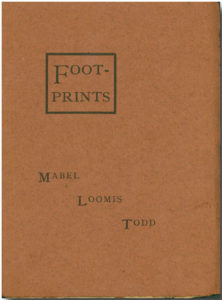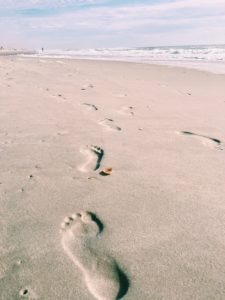2/13/19
This past weekend I was incredibly honored to be the 2019 recipient of the Amherst Historical Society’s “Conch Shell Award.” This award, which takes its name from the 18th century practice of using “ye auld kunk” to summon Amherst residents to town meeting and to worship (strange that a town so far from the sea would have used a conch shell…) is given annually for contributions to the Town of Amherst and its history.
 Because Mabel was one of the founders of the Amherst Historical Society back in 1899, receiving an award from this organization is especially meaningful to me. As I said in my remarks, Amherst has become a place that has all kinds of personal and professional importance to me.
Because Mabel was one of the founders of the Amherst Historical Society back in 1899, receiving an award from this organization is especially meaningful to me. As I said in my remarks, Amherst has become a place that has all kinds of personal and professional importance to me.
Part of this is the connection that I, as a biographer, have come to feel for this place. Richard Holmes, the well-known British biographer of Shelley and Coleridge, among other subjects, has coined the term “footstepping” – the effort to go where your subjects have been and do what they have done. To walk where my subjects had walked; to go into buildings that were once their homes and imagine the scenes that happened there, long ago; to see the seasons in Amherst as they might have – at least before the ravages of climate change alter these seasons any more significantly; – to know the images of 19th century Amherst from Lovell photos and close my eyes and see these places before there was a Jones Library or an Amherst Books, has given me an amazing, physical, visceral connection to the world of the Dickinsons and the Todds – and to Amherst, itself.
 And of course, the first piece of writing for which Mabel was paid was the story she titled “Footprints.” In 1883 this story, one that she’d worked on and revised, repeatedly, was published in the New York Independent. She received $25 for it. The idea for this story emanated from a sleigh ride and walk she had taken with Austin. Several years after the story was published, Mabel recalled in her journal that she’d written it “… in one of those soft, dreary snowfalls and I can remember well the delicious joy of creating, as I wrote, and my joy and belief to be unequalled for me by anything else in the world.” The idea of two lovers’ footprints in the snow joining them in nature and in love inspired her. to write a story in which the protagonist recognizes the love of his life by the footprints she leaves on a beach. The story concludes with a description of the two lovers’ footprints in the sand, side by side, together.
And of course, the first piece of writing for which Mabel was paid was the story she titled “Footprints.” In 1883 this story, one that she’d worked on and revised, repeatedly, was published in the New York Independent. She received $25 for it. The idea for this story emanated from a sleigh ride and walk she had taken with Austin. Several years after the story was published, Mabel recalled in her journal that she’d written it “… in one of those soft, dreary snowfalls and I can remember well the delicious joy of creating, as I wrote, and my joy and belief to be unequalled for me by anything else in the world.” The idea of two lovers’ footprints in the snow joining them in nature and in love inspired her. to write a story in which the protagonist recognizes the love of his life by the footprints she leaves on a beach. The story concludes with a description of the two lovers’ footprints in the sand, side by side, together.
Somehow I think that Mabel’s recognition of “footprinting” as a resonant symbol, and my need to do some “footstepping” in Amherst to know and understand her (and Millicent, and Emily) are both symbols of the journey we go on as writers. It’s important for us to write authentically, for readers to feel that characters are real, that scenes are genuine. For writers of fiction, this means being able to know your characters so well you that an image of the set of footprints left in the sand can tell a meaningful story; for writers of non-fiction, it means knowing your subjects well by doing your best to tread where they have trodden so you can describe places well and get inside the heads of those about whom you are writing. Footsteps leave a trail of footprints; writers leave a trail of words.
I’m grateful to the Amherst Historical Society and Museum for believing that the footstepping I’ve done in Amherst has been in some way significant.

By the way, I’ll be doing more footstepping in Amherst later this spring: on June 1, I’ll be leading another “Mabel Loomis Todd of Amherst.” You’ll soon be able to sign up for it on the Amherst Historical Society and Museum’s website.
